
Your support helps us to tell the story
This election is still a dead heat, according to most polls. In a fight with such wafer-thin margins, we need reporters on the ground talking to the people Trump and Harris are courting. Your support allows us to keep sending journalists to the story.
The Independent is trusted by 27 million Americans from across the entire political spectrum every month. Unlike many other quality news outlets, we choose not to lock you out of our reporting and analysis with paywalls. But quality journalism must still be paid for.
Help us keep bring these critical stories to light. Your support makes all the difference.
Like news pastiche panel shows and the North Korean leadership, the top end of Best Albums Ever lists is a bit of a closed shop. Once critical consensus gathers around a The Velvet Underground & Nico or an OK Computer, they become self-perpetuating classics, the albums every budding critic and serious music fan needs to hear and revere.
Of course, that leaves vast swathes of our favourite records that were somehow passed over, unfairly dismissed or left to languish unjustly in the critical mid-table. The little-heard cult gems or guilty pleasures. The overlooked records from a major canon. The cheesy Seventies dinosaurs that knocked out a couple of stone-cold classics, actually.
How underrated can an album reasonably be? Well, no one here is going to argue that Robbie Williams’ Swing When You’re Winning should’ve won the Mercury or that The Darkness’s Permission to Land is the cheese rock Abbey Road. But below are our picks for those lesser-lauded albums which deserve a more prominent place in the upper echelons of the critical catalogue. The underdogs due their day.
20. The Maccabees, Colour It In
Somewhat unfairly dismissed as trend-chasers when they first emerged in the early Noughties – when just about every guitar-wielding band was being lumped in with The Strokes or the Arctic Monkeys – The Maccabees proved their worth with their 2007 debut, Colour It In. Yes, the lyrics are occasionally gauche (particularly on “Latchmere”, inspired by their local leisure centre).
But they make up for it with tracks such as “X-Ray”, on which angular, jagged guitar riffs battle for dominance over frontman Orlando Weeks’s frantic yelp and the skittering, paranoid percussion. There’s a charming awkwardness to the romantic advances of “First Love”; the freewheeling “All In Your Rows” is a smart, subtle jab at religious hypocrisy; “Precious Time” is a taut indie rock number that captures the impatience of youth. ROC
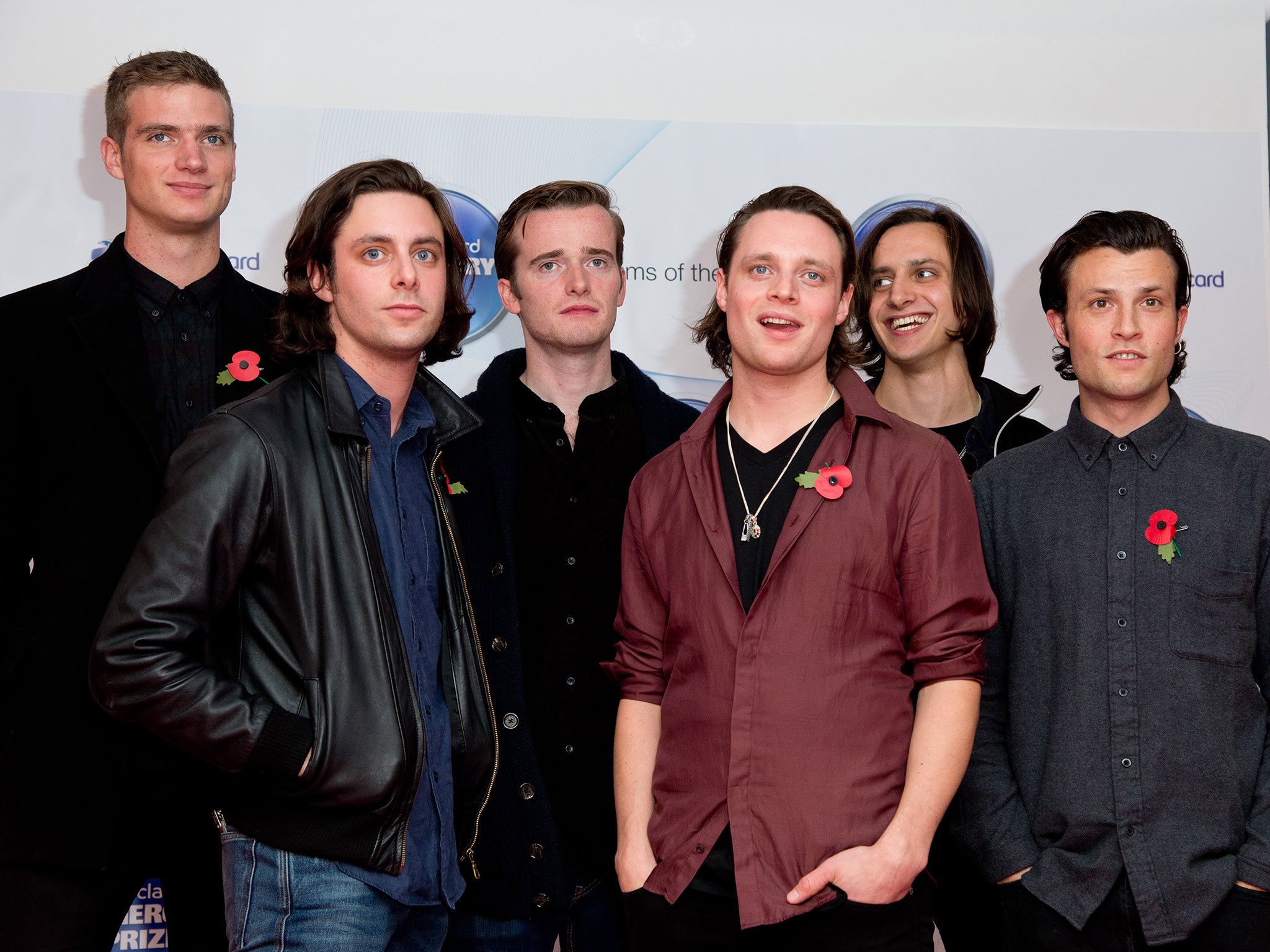
19. Tindersticks, Tindersticks
Since being awarded Melody Maker’s album of the year in 1993, Tindersticks’ immense debut album appears to have trodden beneath the rush to throw black roses at Nick Cave. Admittedly, this double album of grainy chamber rock grandeur – casting singer and thrift shop sophisticate Stuart Staples as a romantically ruined Lee Hazelwood down and out in Nottingham – felt set in a bedsit you wouldn’t want to rent too long.
There were browned bloodstains on the bed sheets, whiskey stains on the formica and (if we’ve interpreted “Marbles” correctly) a landlord who let his boots do the bulk of any arrears negotiations. There’d probably been a murder here, but it was home to so much gruesome beauty, be it the gutter grace of “City Sickness”, the way “Drunk Tank” finds heroism in the battle against alcoholism, the down-at-heel dignity of Dickon Hinchliffe’s vagabond violin or “Patchwork”, a profoundly forlorn music box ballad tracing the colours of heartbreak like threads of fragile cotton. A Nineties urban noir from a golden age all its own. MB
18. Flyte, This is Really Going to Hurt

Passing their “difficult second album” test with flying colours, British folk band Flyte exorcise plenty of demons onThis Is Really Going to Hurt. It was inspired in part by the end of frontman’s Will Taylor’s eight-year relationship, but also the abrupt departure of one of his bandmates. There’s catharsis to be found in the deliciously spiteful “I’ve Got a Girl”, on which Taylor plays a disgruntled ringleader to the sound of jaunty piano keys and squalls of guitar: “This show is over/ Cut the light and fade to black/ I was your biggest fan/ Now I want my money back.” The arrangements are spectacular, as is the way the album slowly reaches a place of acceptance through a lush and hazy Byrds-influenced sound. ROC
17. ELO, Time
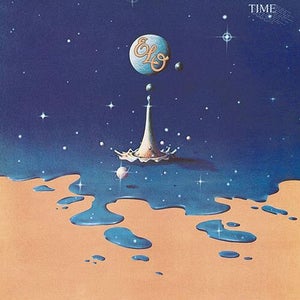
There’s a whole different pub fight to be had over the merits of ELO’s symphonic rock behemoths of the Seventies – I’d argue Eldorado (1974) to Out of the Blue (1977) is as good a four-album run as any of its era and my replies will be turned off until further notice. But Jeff Lynne has undoubtedly long deserved more credit for stripping out the string section and leaping onto the Eighties synthpop vanguard with 1981’s time travelling electro-orchestral concept album Time.
Its lyrical vision of the year 2095 – moon tourism! Hovercars! Smartphone spouses! – is still giving Elon Musk bad ideas, but its sonics would more quickly become a blueprint for Eighties synthpop and inspire the likes of Daft Punk, Grandaddy and Ladyhawke. Let’s not wait until 2095 for it to be pulled out of the rubble. MB
16. The James Low Western Front, Whiskey Farmer
Possibly the understated nature of James Low’s fourth studio album was its undoing, as it seemed to pass by virtually unnoticed upon its release in 2012. But beneath these sedate-sounding songs are beautifully woven stories of a hard-drinking, hard-working everyman. Low and his band serve these tales neat, no frills, with affable Americana instrumentation. He trudges through barren towns and dust-bitten land on “The Stars Don’t Care”, while “Sleeping It Off” has a skittish energy that belies the narrator’s grumpy, hungover state. ROC
15. Silver Sun, Silver Sun
As with comedy movies at the Oscars, the greatest pop rock acts often have to stand aside and watch countless bearded wood shack whiners and tune-allergic experimentalists pick up the more highbrow critical plaudits. But, much like me on the last Elizabeth Line train out of Soho six riojas deep, some records exist purely to revel in cascades of indie-pop hooklines.
In the Eighties, They Might Be Giants’ Lincoln is the lesser-known benchmark of the form; more recently Public Access T.V.’s debut Never Enough is the 38 minutes of new wave party bops you never knew you needed. King of them all, though, is the spectacular debut from London’s Silver Sun, best known for the irrepressible “Lava” but unrelenting in its enthusiasm for bold, bright, multi-harmonied gloss rock that sound like the additive-fuelled offspring of Weezer and Cheap Trick. To those about to unashamedly “Ooo-eee-ooo”, we salute you. MB

No, she’s not one of the “underdogs” mentioned earlier, but Taylor Swift does have an underrated album in the shape of Evermore, her companion record to 2020’s superb surprise album, Folklore. Written during a particularly fruitful period with collaborators such as The National’s Aaron Dessner and Bon Iver’s Justin Vernon, it continued the Folklorian shift from pop into alt-rock territory.
It’s also, arguably, the album where she does her biggest creative flex, blurring the lines between reality and fiction. She’s fantastic on the banjo-strumming caper “No Body No Crime” then, on “Ivy”, she casts spells with off-kilter rhythms and evocative lyrics: “Clover blooms in the fields/ Spring breaks loose, the time is near/ What would he do if he found us out?/ Crescent moon, coast is clear/ Spring breaks loose, but so does fear/ He’s gonna burn this house to the ground.” Exquisite. ROC
13. The Lilac Time, The Lilac Time
Being best known as a former Duran Duran frontman and synthpop one-and-a-half-hit-wonder named after a cartoon hero might not have helped smooth Stephen “Tin Tin” Duffy’s passage into the lower-fi-than-thou Eighties indie ranks. But his post-pop star band The Lilac Time really were folk-rock cousins of The Smiths, Prefab Sprout and Aztec Camera – or The Bluebells asking themselves: How soon is now?
Their faultless debut was an atmospheric marriage of melancholic late-night reflection and wistful whirl; never were finer folk-pop tunes more artfully couched than on “Together”, “Return to Yesterday” or “Too Sooner Late Than Better”. Except, perhaps, on subsequent Lilac Time albums Paradise Circus (1989) and the lustrous Astronauts (1991), a record so widely underrated that this writer recently had to convince Duffy himself that it was any good. MB
12. Nao, And Then Life Was Beautiful

The follow-up to Nao’s Mercury Prize-shortlisted album Saturn marked a palpable shift in tone, bringing her down to earth to explore themes of motherhood, messy relationships and burnout, inspired in part by her diagnosis with Chronic Fatigue Syndrome. Despite these hardships, the album is a joyful one. She celebrates freedom on the woozy “Messy Love” and waves a sour-sweet goodbye on “Glad That You’re Gone”. Her voice – that instantly recognisable, fluttering falsetto, like a butterfly that just inhaled a load of helium – is laced with honey for this heady, saturated sound. Gorgeous. ROC
11. Spiritualized, Let It Come Down
“They were still booing him when we came on stage,” once noted glute-loving hair rock legend David St Hubbins of Spinal Tap. Inversely, the same is true of Spiritualized’s fourth album. Critics were still so in awe of 1997’s Ladies and Gentlemen We Are Floating in Space that they seemed incapable of heaping the same level of lavish praise on this arguably superior follow-up. Involving 115 session musicians, an orchestra and gospel choir and recorded over four years, Let It Come Down was Jason Pierce’s most grandiose symphonic rock statement, with “The Straight and the Narrow”, “Stop Your Crying” and the overwhelming “Anything More” marking the very peak of his powers to move and uplift. Deserves a monument in Rugby, minimum. MB
10. The Corrs, Talk On Corners
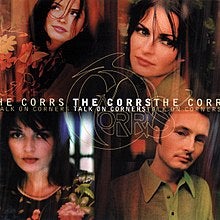
Hear me out, OK? Yes, this album was owned by, at an estimate, one in five households after its release in 1997, and yes, its lead single “Only When I Sleep” was a top 10 hit around the world. But the record itself never really got the artistic plaudits it deserved; critics at the time were dismissive of its Celtic-rock influences and supposedly “goofy” production. But it wasn’t that much different to Mutt Lange’s genius melding of stadium rock and country for Shania Twain’s second record, Come On Over, and with equally brilliant effect.
Songs like “Only When I Sleep” are replete with lush harmonies and plenty of nods to the siblings’ Irish heritage. “I Never Loved You Anyway”, opening on a jubilant flurry of the violin, is wonderful in its catharsis, not least on the big kiss-off chorus. There’s darkness, too, in the tale of failed dreams on “Queen of Hollywood” and the doomed relationship of “No Good for Me”. The Corrs have always been cool, and don’t let the haters tell you otherwise. ROC
9. Kirsty MacColl, Kite
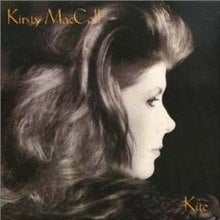
Almost 25 years after her death, it’s high time that our collective memory of Kirsty MacColl graduated from bawdy festive Pogues sidekick to one of British pop’s most sublime and individual voices. Up there, in her suburban glory way, with the Amy Winehouses and Kate Bushes. Key to that transition is the dusting down of her high-point Kite, previewed weekly on the French and Saunders TV show back when musical interludes were a thing and released to polite acclaim in 1989.
In retrospect, though, the record is a magnificent showcase of MacColl’s craft. Her angelic multi-tracked vocals – light and forthright, but laced with melancholy - drift across diaphanous indie rock songs (“Innocence”, “What Do Pretty Girls Do?”), country laments (“Don’t Come the Cowboy With Me Sonny Jim!”) and biting flamenco tunes about fatal fame (“Fifteen Minutes”). Or – trigger warning: your hardest heartbreak ever – over “You and Me Baby”, where both Johnny Marr and Dave Gilmour help her conjure pop’s most stoic tearjerker. Best paired with 1993’s majestic Titanic Days. MB
8. Charli XCX, Crash

After a long Brat summer, Charli XCX’s earlier album Crash has all but faded into the background. But as much as critics (and fans) tend to compare it unfavourably to the experimental alt-pop of her neon-green masterpiece, Crash proved her innate understanding of what makes a brilliant pop record. Inspired in part by David Cronenberg’s 1996 erotic thriller of the same name, it featured many of the same collaborators with whom she later joined forces on Brat: The 1975’s George Daniel and producers AG Cook, Oscar Holter and Lotus IV.
It takes its musical cues from Eighties vixens and plays with the artist’s fascination surrounding pop as product – here by repackaging some of her favourite songs. The pulsating club bop “Used to Know Me” interpolates the 1990 Robin S track “Show Me Love”, while “Good Ones” deploys a crunchy Eighties analogue synth beat. Charli might have dubbed it her “major label sell-out record”, but Crash is a near-flawless demonstration of an artist unpacking the fickle nature of the music industry, all the while ensuring it sounds really, really good. ROC
7. The Magnetic Fields, 50 Song Memoir

New York’s experimental pop figureheads – revolving around baritone bard Stephin Merritt – regularly get major dues for 1999’s three-volume masterpiece 69 Love Songs, although that record too will remain underrated until it’s consistently mentioned in the same breaths as Pet Sounds and The White Album. But in 2017, relatively sub-radar, a sister-piece slipped by: a 50-song collection, each representing one year of Merritt’s life at that point, every bit as varied, emotional and melody-packed as his more celebrated earlier opus.
An epic aural autobiography, it captures childhood idealism (“’71 I Think I’ll Make Another World”), 1980s teenage electro thrills (“’83 Foxx and I”), twentysomething poverty and breakdown (“’94 Haven’t Got a Penny”) and the machinations of maturity (“’14 I Wish I Had Pictures”) in an unbounded array of refined songcraft and illuminating detail. Where else could you trill along to a ditty honouring a formative Edith Wharton novella (“’88 Ethan Frome”) or, on “’02 Be True to Your Bar”, howl away in anthemic celebration of your local boozer? An as-yet-undiscovered classic. MB
6. Frank Black, Frank Black
Having recently split up indie rock’s best band, Frank Black – the freshly adopted moniker of former Pixies singer Black Francis – received a reasonably warm, if a tad butthurt reception on the release of his self-titled solo debut. Thirty years on, though, for all its cleaner edges and Beach Boys homages, Frank Black clearly ranks alongside Pixies’ masterful Nineties albums in terms of inventive melodies given a malevolent sci-fi gleam.
“Los Angeles” mastered the shape-shifting crank pop form he’d pioneered on “The Sad Punk” and “The Happening”, and few albums have as immaculate a closing tryptic as “Adda Lee”, “Every Time I Go Around Here” and “Don’t Ya Rile ‘Em’. Ironically, Black would receive even more critical flack for getting Pixies back in the studio for 2014’s brilliant Indie Cindy. Whassaguytado? MB
5. Slint, Spiderland
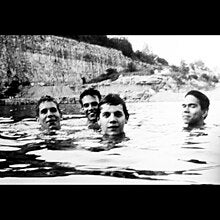
Nominated by a colleague. While I’m dubious about Slint’s second and final album’s status as “underrated”, you could claim that fans of post-rock bands like Mogwai, Explosions in the Sky and Godspeed You! Black Emperor – and more recently the likes of English Teacher, HotWax and Bleach Lab – underestimate just how influential Spiderland has been since its release in 1991.
Recorded over a period of just four days, the album sold poorly at the time and was met with a rather disinterested reception from critics. In the years since, artists and fans have fallen for its quiet-loud approach that seemed to strip rock back to the very instinct that drives it, a kind of skulking, prehistoric sound. “I don’t think you guys will ever get big, but you’ll be really influential,” guitarist David Pajo recalled Steve Albini telling him in a Guardian interview. He wasn’t wrong. ROC
4. Peter Gabriel, Peter Gabriel 3
That the bloke in the flower head from Genesis had evolved, in just five solo years, into a bona fide pioneer of electronic art rock and global music didn’t compute with most contemporary critics faced with Peter Gabriel’s third self-titled album. The melting face on the Hipgnosis-designed cover signified the torching of Gabriel’s sound and persona within an engrossing experimental work that deserves at least a fair chunk of the respect granted to Bowie’s Berlin period.
Opening with the stalking violence of housebreaker’s anthem “Intruder” (the first song ever to feature the ubiquitous Eighties gated drum sound made famous on Phil Collins’ “In the Air Tonight”), the record dubbed “Melt” is an itchy-for-its-meds dissection of madness, war, torture and assassination as unnerving as it is infectious. “No Self Control” and “I Don’t Remember” are post-punk from a padded room: Gabriel jittering and jabbering through choruses of manic pop brilliance, their catchy synth and guitar riffs played (from the sound of it) with bleeding fingernails.
“Games Without Frontiers” was a boy’s own romp through the playground of Eighties politics, and strident anti-apartheid classic “Biko”, arriving five months before Talking Heads’ Remain in Light, could stake a claim to being western rock’s first wholehearted embrace of African music. It all made for an urgent, compulsive album that could possess you like ants under the skin and voices in the head. The nervous breakdown you can whistle. MB
3. Britney Spears, Blackout

“It’s Britney, bitch.” Few music moments are as thrilling as Spears’s opening salvo on her defiant 2007 album, Blackout, which turned a series of personal (and highly publicised) issues into one of her greatest works. The beats are dark and edgy, speaking to the muddied, hedonistic and gossip-ridden times. Spears herself often sounds bored, or mocking, as she rolls her eyes at her detractors. “I’m Mrs Lifestyles of the rich and famous,” she sings on “Piece of Me”... “I’m Mrs ‘oh my God that Britney’s shameless’/ I’m Mrs Extra! Extra! This just in/ I’m Mrs she’s too big now she’s too thin.” Those icy beats and glitchy synths would inspire generations of future-leaning pop stars in the decades to come. Bravo. ROC
2. Swamp Dogg, Rat On!

The artist born Jerry Williams Jr has spent the better part of seven decades being, well, an underdog. A cult figure, he’s managed to be prolific while also magnificently overlooked by much of the mainstream music press. The closest he got to deserved recognition was in 2018, when Justin Vernon assisted him with his record Love, Loss and Auto-Tune, which put his kettle-whistle of a voice through Vernon’s signature vocoder effect.
In the previous century, though, he’d caused more of a stir with the artwork to his second album, 1971’s Rat On!, which he credited with getting him kicked off his record label. It shows him sitting astride a giant rat, which he told The Independent in a 2021 interview represented the white man: “He’s smiling because he’s carrying the Black man on his back, but he thinks it won’t last long.” The album itself was largely ignored (even when it was reissued in 2013), which is a crying shame. “Do You Believe” is an uplifting plea for equality, while “God Bless America For What” is one of the greatest protest anthems of the 20th century. ROC
1. The Wedding Present – Seamonsters
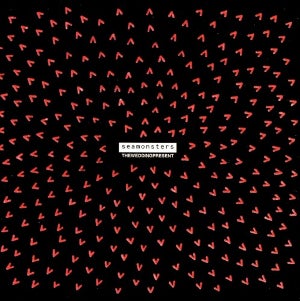
In 1991, the UK music press had their hype rifles targeted so tightly on the basements of Seattle that they barely noticed one of the finest grunge records of the decade creeping out of their own backyard. Leeds’ Wedding Present had emerged as the most ferocious and angst-ridden janglers of the C86 scene, but evolved a grimier sound on 1989’s Bizarro. With Steve Albini as murky midwife, they then birthed a darkly momentous third album in Seamonsters.
Nihilism, desolation and raging anguish engulf David Gedge’s infectious romantic tragedies on “Suck”, “Heather” and “Dalliance”, the flesh-tearing lament of the third wheel in infidelity’s eternal triumvirate. Dense and demented – yet capable of moments of sheer headrush euphoria on “Corduroy” or “Dare” – Seamonsters out-Gished Smashing Pumpkins’ Gish by some margin and remains the most undervalued cult marvel of Nineties alt-rock. An almighty roar from the deep. MB







